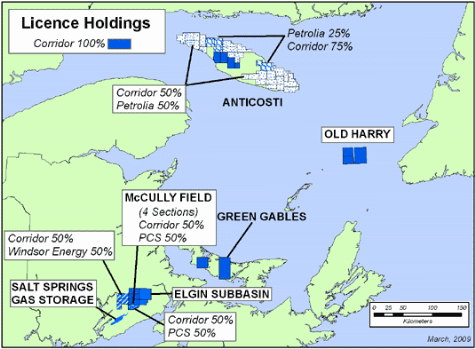From the Canada-Newfoundland and Labrador Offshore Regulatory Board:
“It is prudent practice for a regulator to conduct an internal review following an incident like the one in the Gulf of Mexico to determine if more can be done from an oversight perspective to address concerns about the risks of offshore drilling. Chevron’s plan to drill the Lona O-55 exploration well in the Orphan Basin, which was spudded on May 10, 2010, has undergone two levels of environmental assessment in accordance with C-NLOPB’s requirements and the company has met the regulatory requirements for drilling in the Newfoundland and Labrador Offshore Area. However, in light of the situation unfolding in the Gulf of Mexico and heightened public concern over drilling operations currently underway in the Newfoundland and Labrador Offshore Area, the C-NLOPB has taken the following measures for overseeing well operations at Chevron’s Lona O-55 well. We have met with Chevron in St. John’s and advised them of these measures, which are in addition to requirements contained in the Drilling and Production regulations and associated guidelines. Chevron has confirmed that they will facilitate the C-NLOPB’s oversight.
A team has been established within the C-NLOPB to provide regulatory oversight of Chevron’s operations. This team is comprised of the Chief Safety Officer, the Chief Conservation Officer, members of the Board’s Management Team and selected senior staff with extensive experience in the regulatory oversight of drilling programs. Chevron is expected to ensure the timely posting of daily reports (seven days a week) so that up-to-date information is always available to this team.
Chevron is required to meet with the C-NLOPB’s oversight team every two weeks to review matters of interest. The Board’s Chief Safety Officer will chair these meetings.
Chevron is required to provide the C-NLOPB’s Well Operations Engineer with copies of the field reports prepared in respect of the following: testing of the blowout preventer (BOP) stack; function test of the acoustic control system; function test of the Remotely Operated Vehicle (ROV) intervention capability and function test of the automode function (AMF) system, together with an assessment of the readiness of the ROV system in terms of equipment, procedures and spare parts.
Chevron is expected to monitor developments at the Deepwater Horizon incident and provide periodic assessments on the impact of any lessons learned from that situation to operations at Lona O-55, in particular any lessons learned with respect to well operations, BOP equipment or spill response readiness.
The frequency of audits and inspections onboard the Stena Carron will be approximately every three to four weeks. Normally, audits and inspections are conducted on offshore operators every 3-4 months.
Prior to penetrating any of the targets, Chevron must hold an operations time-out to review and verify, to the satisfaction of the Chief Safety Officer and the Chief Conservation Officer, that all appropriate equipment, systems and procedures are in place to allow operations to proceed safely and without polluting the environment.
Prior to penetrating any of the targets, Chevron should assure itself and the C-NLOPB that all personnel and equipment for spill response identified in its oil spill contingency plan are available for rapid deployment.
Chevron must also make arrangements for a representative of the C-NLOPB to be onboard the Stena Carron to observe the cementing operations of the last casing string set prior to entering any target zones. The observer will also be present to witness the BOP testing, well control drills, and results of the pressure test of the cementing job.
In the case of the BOP testing, a representative of the Certifying Authority will also be present.
In due course, Chevron must provide, for review and assessment by the C-NLOPB’s oversight team, a copy of the proposed well termination program to be issued to field personnel for implementation.
Chevron must also make the necessary arrangements for a representative of the
C-NLOPB to be onboard the Stena Carron to observe the well termination program.”
-srbp-


